Oumuamua rotsblok uit ander zonnestelsel op bezoek
Deze foto is niet meer beschikbaarHet interstellaire rotsblok 'Oumuamua (artistieke impressie).
© AFP / European Southern Observatorium
Voor het eerst hebben astronomen in ons zonnestelsel een rotsblok ontdekt dat afkomstig is van een andere ster. Het stuk ruimtesteen zwierf al miljoenen jaren door de interstellaire ruimte.
Afgelopen weken bereikte het rotsblok het zonnestelsel. Het object heeft de naam 'Oumuamua gekregen. Dat is Hawaïaans voor 'boodschapper van ver die als eerste aankomt'. De asteroïde kreeg een Hawaïaanse naam omdat een telescoop op Hawaï hem als eerste zag.
Eindelijk bewijs
De onderzoekers denken dat de asteroïde al honderden miljoenen jaren door de Melkweg zwerft, niet gebonden aan een ster. Waarschijnlijk heeft hij er 300.000 jaar over gedaan om de oversteek te maken van de ster Vega naar ons zonnestelsel. "Tientallen jaren hebben we gedacht dat zulke objecten er zijn en nu hebben we voor het eerst direct bewijs van hun bestaan'', meldt de Amerikaanse ruimtevaartorganisatie NASA.
Doordat de asteroïde in de buurt is, hebben Europese en Amerikaanse wetenschappers hem goed kunnen bestuderen. 'Oumuamua is roodkleurig en heeft de vorm van een sigaar. Hij is ongeveer veertig meter breed en vierhonderd meter lang. Dat is opvallend, omdat de asteroïdes en kometen in ons zonnestelsel veel minder uitgerekt zijn.
138.000 km per uur
Het rotsblok draait in iets meer dan zeven uur om zijn as. Er hangt geen stofwolk omheen, wat betekent dat hij waarschijnlijk uit rotsen en metalen bestaat en geen water of ijs heeft. 'Oumuamua bevindt zich nu op ongeveer 200 miljoen kilometer van de aarde, tussen de planeten Mars en Jupiter. Hij vliegt met een snelheid van 138.000 kilometer per uur van ons weg.
'Oumuamua is geen blijvertje. In mei 2018 vliegt hij langs Jupiter, in januari 2019 passeert hij Saturnus. Daarna zal hij ons zonnestelsel langzaam achter zich laten, op weg naar het sterrenbeeld Pegasus. Wetenschappers sluiten niet uit dat er meer asteroïdes van buiten ons zonnestelsel langsvliegen, maar tot nu toe waren ze te klein en te vaag om te zien.
Bron: https://www.rtlnieuws.nl/opmerkelijk/unieke-ontdekking-rotsblok-uit-ander-zonnestelsel-op-bezoek
The First Interstellar Object to Visit Us Is More Incredible Than We Ever Expected
It has travelled for hundreds of millions of years.21 NOV 2017
The first asteroid observed visiting our Solar System from elsewhere isn't just unusual in its interstellar origin.
It's also unlike any other asteroid we've seen before. Astronomers have trained a flurry of telescopes on the object discovered last month, and now we're being rewarded with super-exciting details.
Newly named 'Oumuamua, the asteroid is up to 400 metres (0.25 miles) long, and is distinctly cigar-shaped. It could be up to 10 times as long as it is wide - a shape never before seen in an asteroid.
'Oumuamua (official designation 1I/2017 U1 - the "I" is for "interstellar") was first spotted by the Pan-STARRS 1 telescope in Hawaii in late October, and it didn't take long for astrophysicists to figure out that its trajectory and velocity both indicated that it was an extrasolar stranger, perhaps flung out by a neighbouring star.
But there was something odd about it. Preliminary observations suggested it was a comet - but follow-up observations showed none of the characteristics associated with comets, and it was subsequently categorised as an asteroid: the first time a comet's categorisation has changed to asteroid.
But that's not the only unusual thing about 'Oumuamua. Initial calculations showed that the asteroid came from the direction of the star Vega, in the constellation of Lyra.
However, even travelling at an incredible speed of 95,000 kilometres per hour (59,000 miles per hour), it would have taken 300,000 years to reach Earth from Vega - and Vega wasn't in the same place 300,000 years ago.
This suggests that 'Oumuamua could have been travelling through space, unattached to any star system, for hundreds of millions of years.
"For decades we've theorised that such interstellar objects are out there, and now - for the first time - we have direct evidence they exist," said astrophysicist Thomas Zurbuchen from NASA.
"This history-making discovery is opening a new window to study formation of solar systems beyond our own."
When 'Oumuamua was discovered, telescopes around the world set to make observations. Gemini, the ESO's Very Large Telescope in Chile, the Canada France Hawaii Telescope, the United Kingdom Infrared Telescope, and other observatories trained their eyes on the asteroid.
Combining images from the various telescopes, an international team found that the asteroid varies in brightness by a factor of about 10 every 7.3 hours, matching its spin about its axis. No other comet or asteroid in the Solar System varies so widely in brightness.
"This unusually big variation in brightness means that the object is highly elongated: about ten times as long as it is wide, with a complex, convoluted shape," said Karen Meech from the Institute for Astronomy in Hawaii.
"We also found that it had a reddish color, similar to objects in the outer Solar System, and confirmed that it is completely inert, without the faintest hint of dust around it."
This implies that the asteroid is made of dense material - rock and possibly metal - and has no water or ice. The redness of the surface was probably caused by cosmic irradiation over the hundreds of millions of years it has been travelling the Milky Way galaxy.
'Oumuamua slingshotted around the Sun on 9 September at a speed of 315,000 kilometres per hour (196,000 miles per hour), and is now travelling out of the Solar System. As of 20 November, its speed was 138,000 kilometres per hour (85,700 miles per hour).
It is due to pass Jupiter's orbit in May 2018, and Saturn's in January 2019. Scientists will continue taking observations until 'Oumuamua is too faint to see.
The research has been published today in the journal Nature.
Bron: http://www.sciencealert.com/interstellar-extrasolar-asteroid-weirder-than-we-knew-oumuamua
"We" gaan naar Oumuamua...er zijn echter wel wat obstakels.
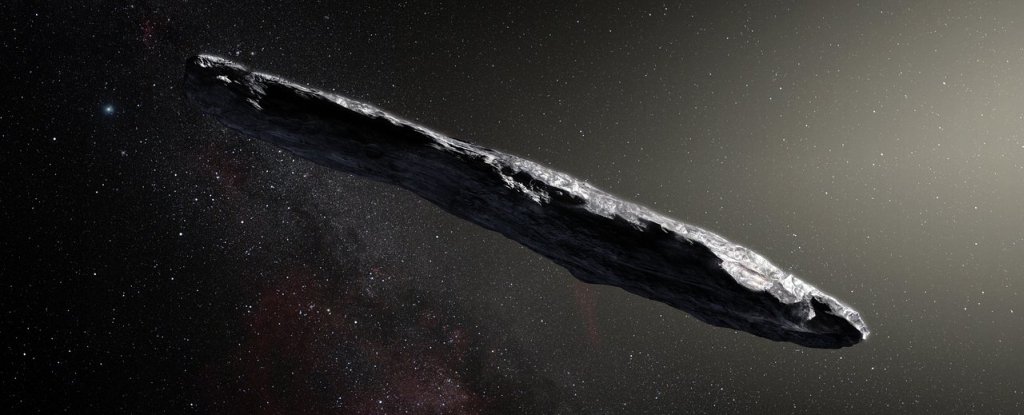
Artist impression of 'Oumuamua (European Southern Observatory/M. Kornmesser)
In het eerste bericht hebben we al een introductie laten zien, van de sigaarvormige Oumuamua, een vorm die we eigenlijk nog niet eerder gezien hebben.
In eerste instantie dacht men dat Oumuamua uit de richting van de ster Vega kwam, in het sterrenbeeld Lyra met een snelheid van een slordige 95.000 km/u. Maar met die snelheid zou Oumuamua er 300.000 jaar op doen om ons te bereiken. En 300.000 jaar geleden stond Vega nog helemaal niet op die positie! Dus wellicht heeft Oumuamua al miljoenen kilometers afgelegd...helemaal alleen, zonder Vega ooit maar tegen te zijn gekomen.
Het gebeurt niet elke dag dat er een object van buiten ons zonnestelsel bij ons op "bezoek" komt en wellicht antwoorden zou kunnen geven op de vorming van het zonnestelsel, en ons meer leren over asteroïden van buiten ons zonnestelsel.
Dus heeft een groep van astronomen en ingenieurs het idee bedacht om Oumuamua eens van dichtbij te gaan bestuderen. Project Lyra is hiermee "geboren".
Er zijn wel een paar issues die opgelost moeten worden!
- In tegenstelling tot de meeste objecten in ons zonnestelsel, heeft Oumuamua geen baan om de zon, dat wordt het grootste obstakel
- Toen Oumuamua ons zonnestelsel binnenkwam vloog hij met 95.000 km/u, dat is inmiddels al 138.000 km/u geworden door de aantrekkingskracht van de zon! Men verwacht dat Oumuamua in mei 2018 Jupiter zal passeren.
- Rosetta had 10 jaar nodig om komeet 67/P te bereiken (510 miljoen kilometer van de aarde); Juno had 5 jaar nodig om in een baan om Jupiter te komen (588 miljoen kilometer). New Horizons (die naar Pluto ging) vloog met een immense snelheid van 58,536 km/u en Voyager 1 vloog zelfs met een snelheid van 61,200 km/u.......Maar dat is "slechts" de helft van de snelheid die er nu nodig is om Oumuamua in te halen. Uiteindelijk zal de snelheid weer wat vertragen en teruggaan naar de 95.000 km, maar dat zal nog een paar jaar duren. Met de vooruitgang in de propulsie technologien zal het in de toekomst mogelijk zijn om in een bepaald tijdbestek een asteroide in te halen.
hiermee de flexibiliteit geeft, om in de toekomst snel te reageren op onverwachtte gebeurtenissen. Zoals bijvoorbeeld een toekomstige Oumuamua. Als je deze technieken vandaag de dag had, zou je binnen een jaar "het object" bereikt hebben.
Bronnen:
http://www.sciencealert.com/scientists-engineers-want-to-send-rocket-interstellar-comet-oumuamua
https://i4is.org/i4is-announces-project-lyra-mission-a2017-u1-interstellar-asteroid/ | Gewijzigd: 24 november 2017, 11:48 uur, door Joyce.s
Hieronder de uitwerking van Project Lyra
Project Lyra: Sending a Spacecraft to 1I/’Oumuamua (former A/2017 U1), the Interstellar Asteroid
Abstract
The first definitely interstellar object 1I/’Oumuamua (previously A/2017 U1) observed in our solar system provides the opportunity to directly study material from other star systems. Can such objects be intercepted? The challenge of reaching the object within a reasonable timeframe is formidable due to its high heliocentric hyperbolic excess velocity of about 26 km/s; much faster than any vehicle yet launched. This paper presents a high-level analysis of potential near-term options for such a mission. Launching a spacecraft in a reasonable timeframe of 5-10 years requires a hyperbolic solar system excess velocity between 33 to 76 km/s for mission durations between 30 to 5 years. Different mission durations and their velocity requirements are explored with respect to the launch date, assuming direct impulsive transfer to the intercept trajectory. Several technology options are outlined, ranging from a close solar Oberth Maneuver using chemical propulsion, and the more advanced options of solar and laser sails. To maximize science return decelerating the spacecraft at ’Oumuamua is highly desirable, due to the minimal science return from a hyper-velocity encounter. It is concluded that although reaching the object is challenging, there seem to be viable options based on current and near-term technology.1. Introduction
On October 19th 2017, the University of Hawaii’s Pan-STARRS 1 telescope on Haleakala discovered a fast-moving object near the Earth, initially named A/2017 U1, but now designated as 1I/’Oumuamua [1]. This object was found to be not bound to the solar system, with a velocity at infinity of ~26 km/s and an incoming radiant (direction of motion) near the solar apex in the constellation Lyra [2]. Due to the non-observation of a tail in the proximity of the Sun, the object does not seem to be a comet but an asteroid. More recent observations from the Palomar Observatory indicate that the object is reddish, similar to Kuiper belt objects [3]. This is a sign of space weathering. Its orbital features have been analyzed by [2,4].At present, the frequency of similar objects entering the solar system is poorly constrained. As 1I/‘Oumuamua is the nearest macroscopic sample of interstellar material, likely with an isotopic signature distinct from any other object in our solar system, the scientific returns from sampling the object are hard to understate. Detailed study of interstellar materials at interstellar distances are likely decades away, even if Breakthrough Initiatives’ Project Starshot, for example, is vigorously pursued. Hence, an interesting question is if there is a way to exploit this unique opportunity by sending a spacecraft to 1I/‘Oumuamua to make observations at close range.
The Initiative for Interstellar Studies, i4is, has announced Project Lyra on the 30th of October to answer this question. The goal of the project is to assess the feasibility of a mission to 1I/‘Oumuamua using current and near-term technology and to propose mission concepts for achieving a fly-by or rendezvous. The challenge is formidable: According to current estimates, 1I/‘Oumuamua has a heliocentric hyperbolic excess velocity of 26 km/s. This considerably faster than any object humanity has ever launched into space. Voyager 1, the fastest object humanity has ever built, has a hyperbolic excess velocity of 16.6 km/s. As 1I/‘Oumuamua is already leaving our solar system, any spacecraft launched in the future would need to chase it. However, besides the scientific interest of getting data back from the object, the challenge to reach the object could stretch the current technological envelope of space exploration. Hence, Project Lyra is not only interesting from a scientific point of view but also in terms of the technological challenge it presents. Figure 1 shows the logo for Project Lyra.
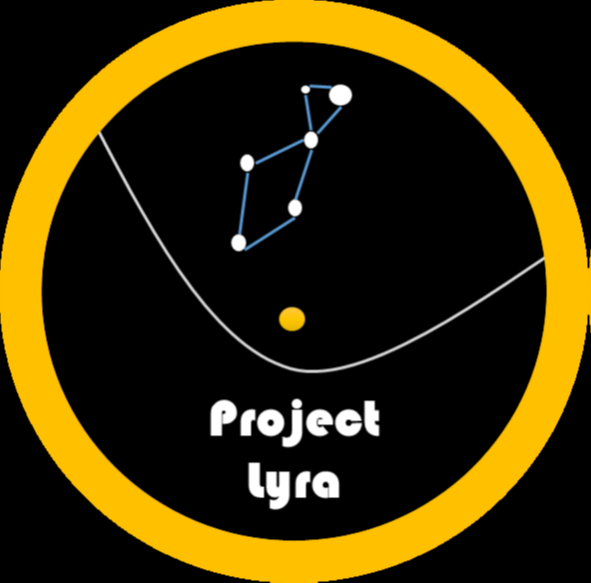
Figure 1: Logo for the i4is initiative Project Lyra
This paper presents some preliminary results for a mission concept to 1I/‘Oumuamua.
2. Trajectory Analysis
Given the hyperbolic excess velocity and its inclination with respect to the solar system ecliptic, the first question to answer is the required velocity increment (DeltaV) to reach the object, a key parameter for designing the propulsion system. Obviously, a slower spacecraft will reach the object later than a faster spacecraft, leading to a trade-off between trip duration and required DeltaV. Furthermore, the earlier the spacecraft is launched, the shorter the trip duration as the object’s distance increases with time. However, a launch date within the next 5 years is likely to be unrealistic, and even 10 years could be challenging, in case new technologies need to be developed. Hence, a third basic trade-off is between launch date and trip time / characteristic energy C3. The characteristic energy is the square of the hyperbolic excess velocity, which can be understood as is the velocity at infinity with respect to the Sun. These trade-offs are captured in Figure 2. The figure plots the characteristic energy for the launch with respect to mission duration and launch date. An impulsive propulsion system with a sufficiently short thrust duration is assumed. No planetary or solar fly-by is assumed, only a direct launch towards the object. It can be seen that a minimum ????3 exists, which is about 26.5 km/s (703km²/s²). However, this minimum value rapidly increases when the launch date is moved into the future. At the same time, a larger mission duration leads to a decrease of the required ????3 but also implies an encounter with the asteroid at a larger distance from the Sun. A realistic launch date for a probe would be at least 10 years in the future (2027). At that point, the hyperbolic excess velocity is already at 37.4km/s (1400km²/s²) with a mission duration of about 15 years, which makes such an orbital insertion extremely challenging with conventional launches in the absence of a planetary fly-by.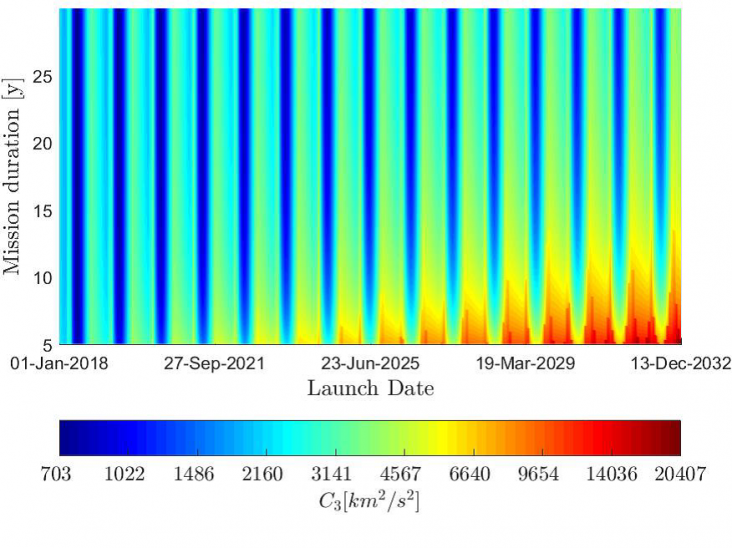
Figure 2: Characteristic energy C3 with respect to mission duration and launch date.
Apart from the hyperbolic excess velocity at launch, the excess velocity relative to the asteroid at encounter (????∞,2) has to be taken into account since it defines the type of mission that is achievable. A high excess velocity with respect to the asteroid reduces the flight duration but also reduces the time available for the measurements close to the interstellar object. On the other hand, a low value for ????∞,2 could even enable orbital insertion around the asteroid with an impulsive or low thrust maneuver to decelerate the probe. The excess velocity at arrival is plotted in Figure 3 as a function of the launch date and the flight duration. The deformations of the velocity curves is due to the Earth’s orbit around the Sun, which results in a more or less favorable position for a launch towards the object. It can be seen that a minimum excess velocity of about 26.75km/s implies a launch in 2018 and a flight duration of over 20 years. Such value for excess velocity does not prohibit an orbital insertion around ‘Oumuamua. However, this minimum value rapidly increases for later launch dates. A realistic launch date for a probe would be between 5 to 10 years in the future (2023 to 2027). At that point, the required hyperbolic excess velocity for the mission is between 33 to 76 km/s, for mission durations between 30 to 5 years. These values highly exceed the current chemical and electric propulsion system capabilities for deceleration and orbital insertion, and hence a fly-by would be more reasonable.
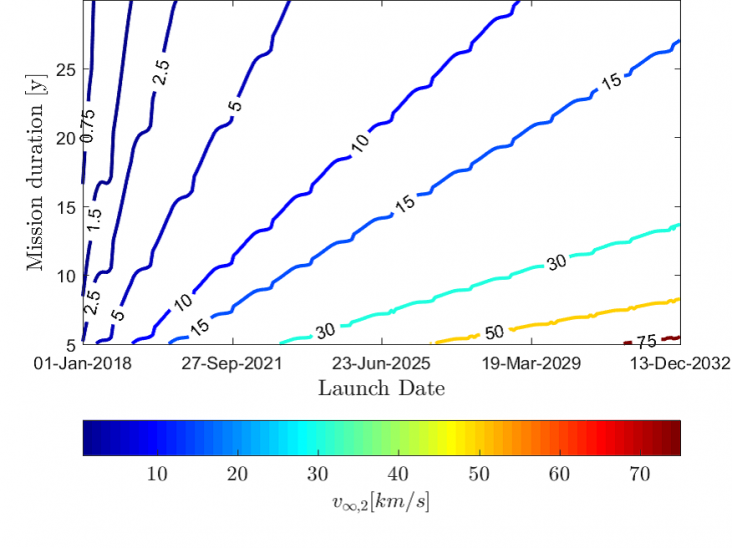
Figure 3: Hyperbolic excess velocities with respect to mission duration and launch date
Figure 4 shows the approximate distance at which the spacecraft passes the object. For a realistic launch date of 2027 or later, the spacecraft flies past the object at a distance between 100 and 200 AU, which is similar to the distance to the Voyager probes today. At such a distance, obviously power and communication becomes an issue and nuclear power sources such as RTGs are required.
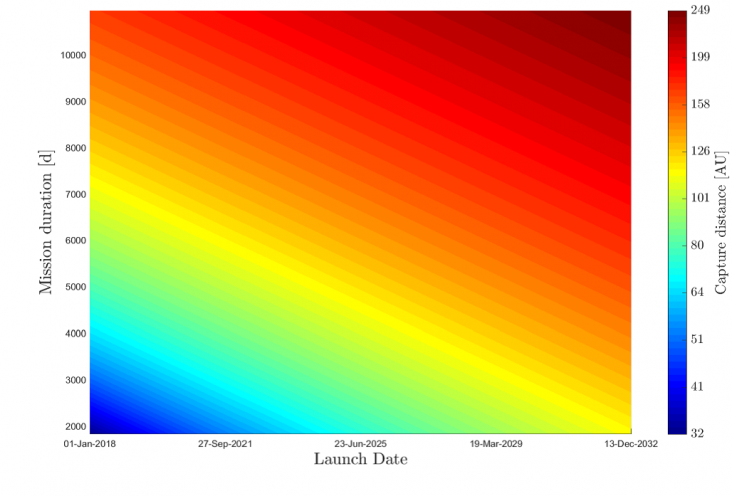
Figure 4: Launch date versus mission duration. Color code indicates the distance at which the spacecraft passes the object 5
Figure 5 shows a sample trajectory with a launch date in 2025. The orbit of Earth can be seen as a tiny ellipse around the Sun (indicated as a black circle) at the bottom right of the figure. The trajectories of the comet and the spacecraft are almost straight lines.
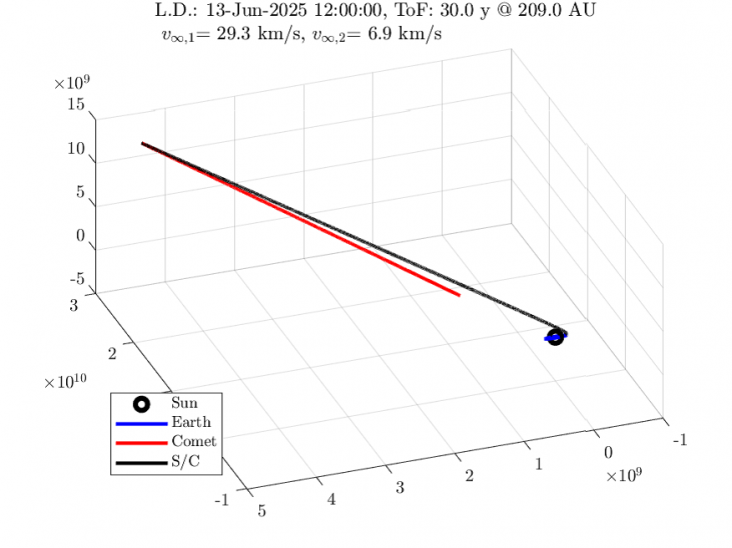
Figure 5: Sample spacecraft trajectory for a launch in 2025 and an encounter with 1I/‘Oumuamua in 2055
Another proposal is to not necessarily chase 1I/‘Oumuamua but to prepare for the next interstellar object to enter our solar system by developing the means to quickly launch a spacecraft towards such an object.
Two scenarios are analysed: First a mission with short duration of only a year, leading to an encounter only 5.8 AU from the sun. However the required hyperbolic excess velocity the current launcher capabilities at approximately 20 km/s. Finally, due to the angle of the encounter, a high velocity relative to the asteroid would be expected, amounting to 13.6 km/s, shown in Figure 6.
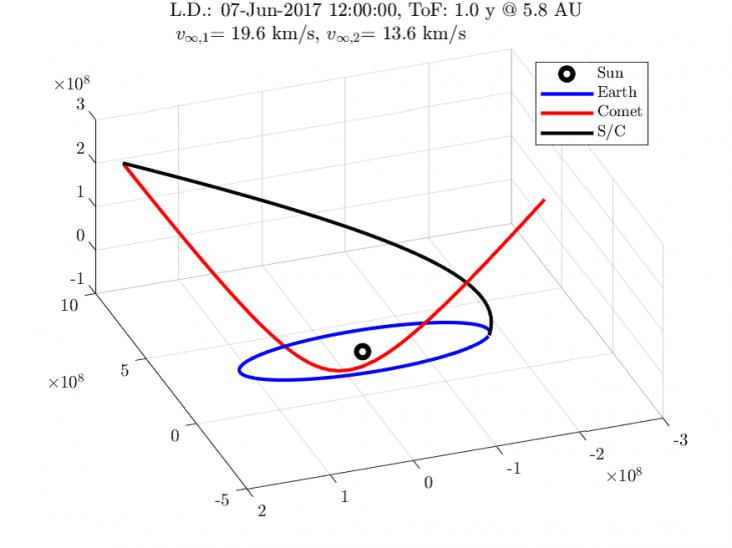
Figure 6: Trajectory for a launch in 2017 and an encounter in 2018
A mission on the same launch date but with a duration of 20 years is shown in Figure 7. At encounter, the relative velocity of the spacecraft with respect to the object is relatively low (about 600m/s for this specific case), which would be an opportunity for a deceleration maneuver.
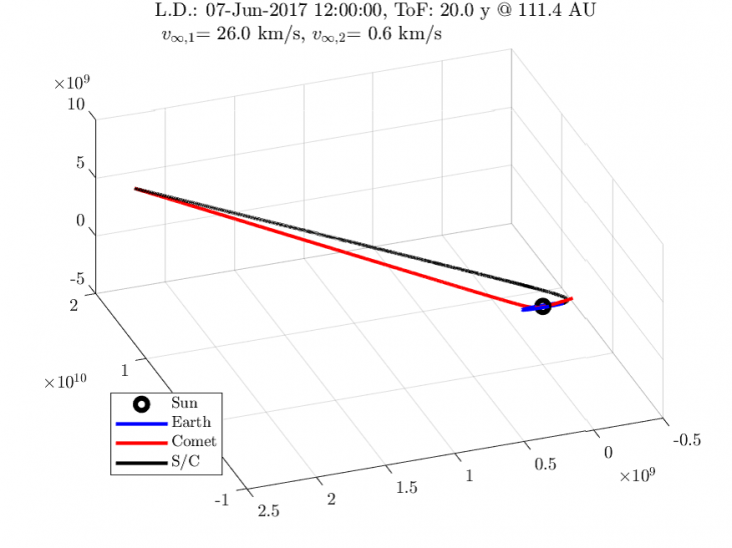
Figure 7: Trajectory for a launch in 2017 and an encounter in 2037 7
To summarize, the difficulty of reaching 1I/‘Oumuamua is a function of when to launch, the hyperbolic excess velocity, and the mission duration. Future mission designers would need to find appropriate trade-offs between these parameters. For a realistic launch date in 5 to 10 years, the hyperbolic excess velocity is of the order of 33 to up to 76 km/s with an encounter at a distance far beyond Pluto (50-200AU).
3. Concepts and Technologies
As shown previously, chasing 1I/‘Oumuamua with a realistic launch date (next 5-10 years), is a formidable challenge for current space systems.
Nominally a single launch architecture, via the Space Launch System (SLS) for example, would simplify mission design. However other launch providers project promising capabilities in the next few years. One potential mission architecture is to make use of SpaceX’s Big Falcon Rocket (BFR) and their in-space refueling technique with a launch date in 2025. To achieve the required hyperbolic excess (at least 30 km/s) a Jupiter flyby combined with a close solar flyby (down to 3 solar radii), nicknamed “solar fryby” is envisioned. This maneuver is also known under “Oberth Maneuver” [5]. The architecture is based on the Keck Institute for Space Studies (KISS) [6] and the Jet Propulsion Laboratory (JPL) [7] interstellar precursor mission studies. Using the BFR however eliminates the need for multi-planet flybys to build up momentum for a Jupiter trajectory. Instead via direct launch from a Highly Eccentric Earth Orbit (HEEO) the probe, plus various kick-stages, is given a C3 of 100 km²/s² into an 18 month trajectory to Jupiter for a gravity assist into the solar fryby. A multi-layer thermal shield protects the spacecraft, which is boosted by a high-thrust solid rocket stage at perihelion. The KISS Interstellar Medium study computed that a hyperbolic excess velocity of 70 km/s was possible via this technique, a value which achieves an intercept at about 85 AU in 2039 for a 2025 launch. More modest figures can still fulfill the mission, such as 40 km/s with an intercept at 155 AU in 2051. With the high approach speed a hyper-velocity impactor to produce a gas 'puff' to sample with a mass spectrometer could be the serious option to get in-situ data.
The above architecture emphasizes urgency, rather than advanced techniques. Using more advanced technologies, for example solar sails, laser sails, and laser electric propulsion could open up further possibilities to flyby or rendezvous with 1I/‘Oumuamua. In the following, first order analyses for solar and laser sail missions are given.
For the solar sail mission, a launch from Earth orbit is assumed, given a time to launch of 3 to 4 years. The velocity requirement is ~55 km/s, suggesting a lightness number for the mission of 0.15, and a characteristic acceleration of 0.009 m/s2. This requires a sail loading of 1 g/m², advanced materials with light payloads might achieve 0.1 g/m². Given this, for different spacecraft masses assuming a sail loading of σ = 1 g/m² sail design leads to the values shown in Table 1 for a circular and square-shaped sail.
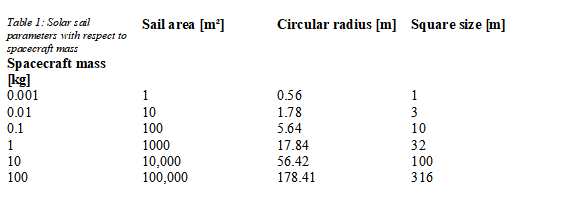
The most appropriate and practical design would assume a launch in 4 years and a 1 kg spacecraft mass and lower.
Laser-pushed sail-based missions, based on Breakthrough Initiatives’ Project Starshot technology [8–10], would use a 2.74 MW laser beam, with a total velocity increment of 55 km/s, launched in 3.5 years (2021), accelerating at 1g for 3,000s, the probe size would be about 1 gram. It would reach 1I/‘Oumuamua in about 7 years. With a 27.4 MW laser then a 10 gram probe could be used. Higher spacecraft masses could be achieved by using different mission architectures, lower acceleration rates, and longer mission durations. However, with such a laser beaming infrastructure in place, hundreds or even thousands of probes could be sent, as illustrated in Figure 8. Such a swarm-based or distributed architecture would allow for gathering data over a larger search volume without the limitations of a single monolithic spacecraft.
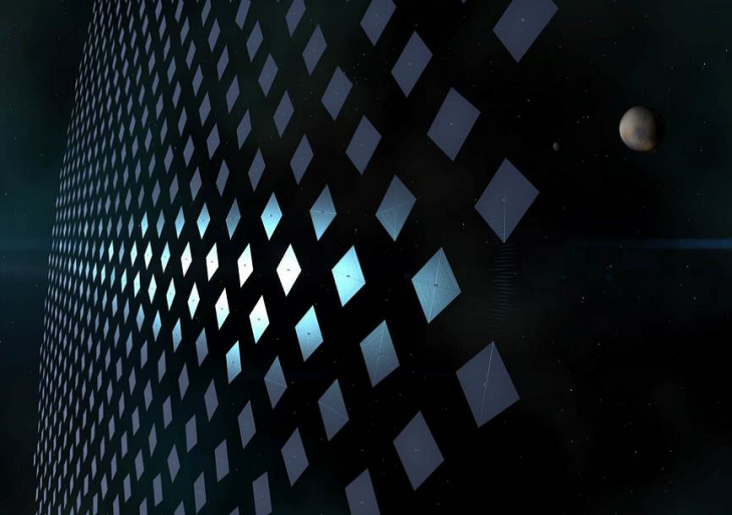
Figure 8: Laser sail swarm (Image credit: Adrian Mann)
Another concept proposed by Streeman and Peck [11] is to send ChipSats into the magnetosphere of Jupiter, then using the Lorentz force to accelerating them to very high velocities of about 3,000 km/s [12,11,13]. However, controlling the direction of these probes might not be trivial.
An important implication is that once an operational Project Starshot beaming infrastructure has been established, even at a small scale, missions to interstellar objects flying through the solar system could be launched within short notice and could justify their development. The main benefit of such an architecture would be the short response time to extraordinary opportunities. The investment would be justified by the option value of such an infrastructure.
Regarding deceleration at the object, obviously existing propulsion systems could be used, e.g. electric propulsion, though limited by the low specific power of RTGs as a power source. With an intercept distance beyond the Heliosphere, into the pristine Interstellar Medium (ISM) more advanced technologies such as magnetic sails [14,15], electric sails [16], and the more recent magnetoshell braking system [17] are worth investigating. The Technological Readiness of these more advanced technologies is currently low, dependent on breakthroughs in superconducting materials manufacture, but they would multiply the scientific return by orders of magnitude.
The small size of the object and its low albedo will make it difficult to observe it once it has entered deep space again. This means the navigation problem of getting a sufficiently accurate fix on 1I/‘Oumuamua to get close enough to the object to send back useful data is considerable. Due to the positional uncertainty of such a difficult-to-track object, a distributed, swarm-based mission design that is able to span a large area, should be investigated.
4. Conclusions
The discovery of the first interstellar object entering our solar system is an exciting event and could be the chance of a lifetime or several lifetimes. In order to assess the feasibility of reaching this object, i4is has recently initiated Project Lyra. In this article, we identified key challenges of reaching 1I/‘Oumuamua and ballpark figures for the mission duration and hyperbolic excess velocity with respect to the launch date. In any case, a mission to the object will stretch the boundary of what is technologically possible today. A mission using conventional chemical propulsion system would be feasible using a Jupiter flyby to gravity-assist into a close encounter with the Sun. Given the right materials, solar sail technology or laser sails could be used.An important result of our analysis is that the value of a laser beaming infrastructure from the Breakthrough Initiatives’ Project Starshot would be the flexibility to react quickly to future unexpected events, such as sending a swarm of probes to the next object like 1I/‘Oumuamua. With such an infrastructure in place today, intercept missions could have reached 1I/‘Oumuamua within a year.
Future work within Project Lyra will focus on analyzing the different mission concepts and technology options in more detail and to downselect 2-3 promising concepts for further development.
References
[1] The International Astronomical Union - Minor Planet Center, MPEC 2017-V17 : New Designation Scheme for Interstellar Objects, Minor Planet Electronic Circular. (2017). https://www.minorplanetcenter.net/mpec/K17/K17V17.html (accessed November 7, 2017).[2] E. Mamajek, Kinematics of the Interstellar Vagabond A/2017 U1, (2017). http://arxiv.org/abs/1710.11364 (accessed November 5, 2017).
[3] J. Masiero, Palomar Optical Spectrum of Hyperbolic Near-Earth Object A/2017 U1, (2017). http://arxiv.org/abs/1710.09977 (accessed November 5, 2017).
[4] C. de la F. Marcos, R. de la F. Marcos, Pole, Pericenter, and Nodes of the Interstellar Minor Body A/2017 U1, (2017). doi:10.3847/2515-5172/aa96b4.
[5] R. Adams, G. Richardson, Using the Two-Burn Escape Maneuver for Fast Transfers in the Solar System and Beyond, in: 46th AIAA/ASME/SAE/ASEE Joint Propulsion Conference & Exhibit, American Institute of Aeronautics and Astronautics, Reston, Virigina, 2010. doi:10.2514/6.2010-6595.
[6] L. Friedman, D. Garber, Science and Technology Steps Into the Interstellar Medium, 2014.
[7] L. Alkalai, N. Arora, S. Turyshev, M. Shao, S. Weinstein-Weiss, A Vision for Planetary and Exoplanet Science: Exploration of the Interstellar Medium: The Space between Stars, in: 68th International Astronautical Congress (IAC 2017), 2017. 10
[8] P. Lubin, A Roadmap to Interstellar Flight, Journal of the British Interplanetary Society. 69 (2016).
[9] A.M. Hein, K.F. Long, D. Fries, N. Perakis, A. Genovese, S. Zeidler, M. Langer, R. Osborne, R. Swinney, J. Davies, B. Cress, M. Casson, A. Mann, R. Armstrong, The Andromeda Study: A Femto-Spacecraft Mission to Alpha Centauri, (2017). http://arxiv.org/abs/1708.03556 (accessed November 5, 2017).
[10] A.M. Hein, K.F. Long, G. Matloff, R. Swinney, R. Osborne, A. Mann, M. Ciupa, Project Dragonfly: Small, Sail-Based Spacecraft for Interstellar Missions, Submitted to JBIS. (2016).
[11] B. Streetman, M. Peck, Gravity-assist maneuvers augmented by the Lorentz force, Journal of Guidance, Control, and Dynamics. (2009).
[12] M. Peck, Lorentz-actuated orbits: electrodynamic propulsion without a tether, NASA Institute for Advanced Concepts, Phase I Final Report. (2006). http://www.niac.usra.edu/files/studies/abstracts/1385Peck.pdf (accessed April 18, 2016).
[13] J. Atchison, B. Streetman, M. Peck, Prospects for Lorentz Augmentation in Jovian Captures, in: AIAA Guidance, Navigation, and Control Conference and Exhibit, American Institute of Aeronautics and Astronautics, Reston, Virigina, 2006. doi:10.2514/6.2006-6596.
[14] D. ANDREWS, R. ZUBRIN, Magnetic sails and interstellar travel, British Interplanetary Society, Journal. (1990). http://www.lunarsail.com/LightSail/msit.pdf (accessed April 16, 2016).
[15] N. Perakis, A.M. Hein, Combining Magnetic and Electric Sails for Interstellar Deceleration, Acta Astronautica. 128 (2016) 13–20.
[16] P. Janhunen, Electric sail for spacecraft propulsion, Journal of Propulsion and Power. (2004). http://arc.aiaa.org/doi/abs/10.2514/1.8580 (accessed August 14, 2016).
[17] A. Shimazu, D. Kirtley, D. Barnes, J. Slough, Cygnus Code Simulation of Magnetoshell Aerocapture and Entry System, Bulletin of the American Physical Society. (2017).
Bron: https://arxiv.org/ftp/arxiv/papers/1711/1711.03155.pdf
'Luisteren' naar interstellaire bezoeker 'Oumuamua
Niemand denkt serieus dat de extreem langgerekte interstellaire planetoïde 'Oumuamua een buitenaards ruimteschip is, maar toch wordt vanaf woensdagavond 13 december om 21.00 uur Nederlandse tijd een 'luistercampagne' in gang gezet met de 110-meter grote Green Bank Telescope in de Verenigde Staten. Met de gigantische schotelantenne kunnen mogelijke kunstmatige radiosignalen van het merkwaardige hemellichaam worden opgevangen. 'Oumuamua werd dit najaar ontdekt, kort nadat hij op kleine afstand langs de zon was gevlogen. Uit de extreem hoge snelheid van het zeer langgerekte hemellichaam blijkt dat het afkomstig is van buiten het zonnestelsel. Inmiddels bevindt de donkere, roodgekleurde 'kosmische komkommer' zich alweer op ca. 300 miljoen kilometer afstand van de zon, maar eventuele radioboodschappen kunnen zeker nog gedetecteerd worden. Aanvankelijk zal er tien uur lang naar 'Oumuamua 'geluisterd' worden, verspreid over vier perioden. De campagne wordt bekostigd door Breakthrough Listen, een door miljardair Yuri Milner gefinancierd initiatief om jacht te maken op buitenaardse beschavingen. (GS)
Bron: http://astronieuws.nl/
'Oumuamua is misschien tóch een komeet
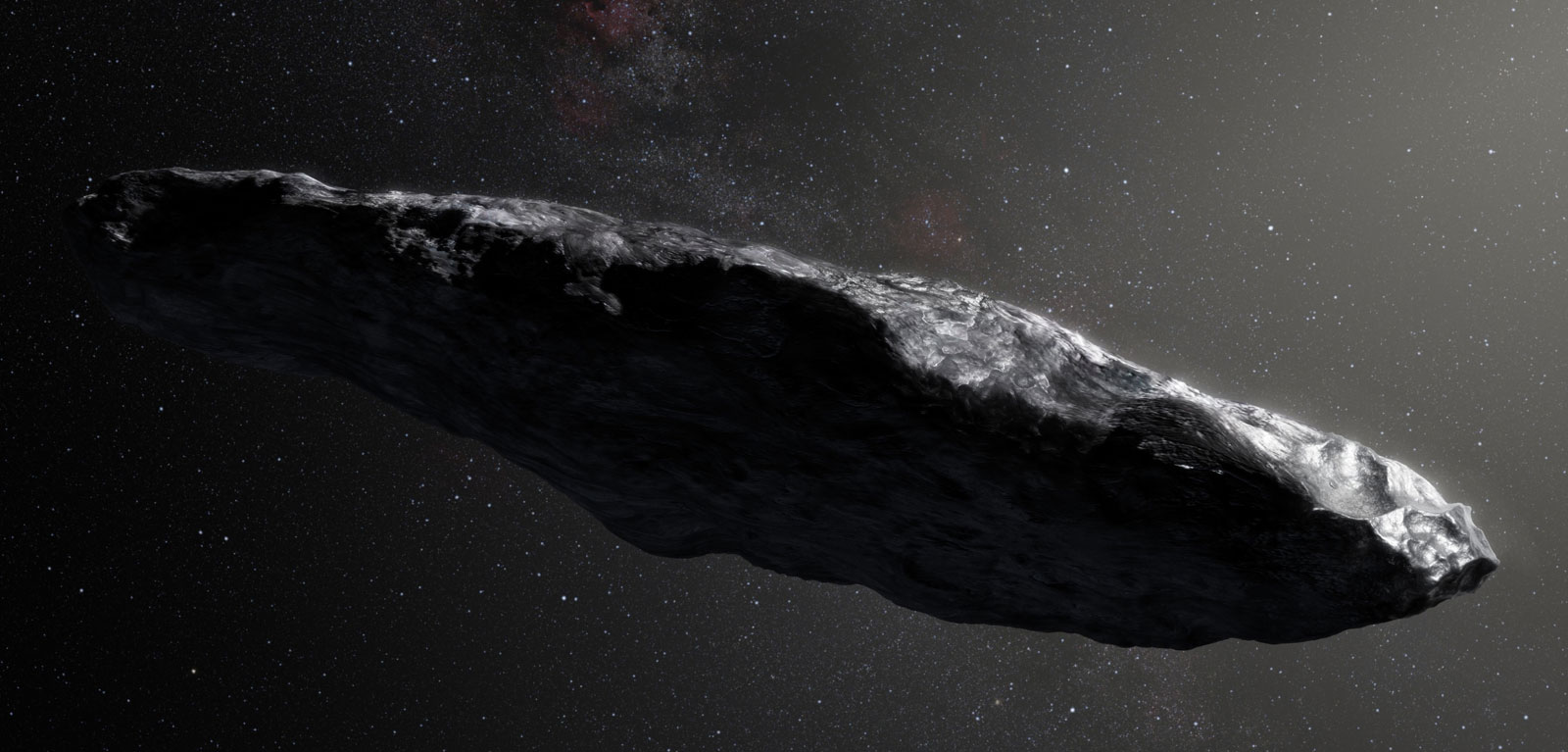
Het extreem langgerekte interstellaire hemellichaam 1I/2017 U1 'Oumuamua (ca. 200 x 20 meter) is misschien tóch een komeet. Het mysterieuze object werd ontdekt in oktober, nadat het in september op minder dan 40 miljoen kilometer afstand langs de zon scheerde. Het is afkomstig van buiten ons eigen zonnestelsel; vermoedelijk gaat het om een brokstuk dat is weggeslingerd uit een ander planetenstelsel. Omdat 'Oumuama geen enkel teken van komeetachtige activiteit vertoonde, wordt algemeen aangenomen dat het om een rotsachtige planetoïde gaat.
In Nature Astronomy schrijven sterrenkundigen nu echter dat het misschien toch een ijsachtige komeet is. Spectroscopische waarnemingen hebben uitgewezen dat het donkerrode oppervlak van 'Oumuamua uit organische (koolstofhoudende) verbindingen bestaat die lange tijd hebben blootgestaan aan kosmische straling.
Berekeningen van Alan Fitzsimmons (Queen's University Belfast) en zijn collega's laten nu zien dat die korst maar 20 centimeter dik hoeft te zijn om te voorkomen dat de hitte van de zon doordringt tot in het inwendige, ook al moet het oppervlak gedurende korte tijd verhit zijn geweest tot ruim 300 graden. Dat is voornamelijk te danken aan de hoge snelheid van het hemellichaam (26 kilometer per seconde), waardoor de afstand tot de zon ook weer heel snel toenam.
Ons eigen zonnestelsel telt enorm veel meer kometen (onder andere in de Oortwolk) dan planetoïden. Als dat voor andere planetenstelsels ook geldt, is het dus sowieso al veel waarschijnlijker dat de eerst ontdekte interstellaire bezoeker een brok ijs is. Zonder de beschermende korst van koolstofverbindigen zou 'Oumuamua - als het echt een komeet is - de scheervlucht langs de zon niet hebben overleefd. (GS)
Meer informatie:
http://www.qub.ac.uk/News/Allnews/AlienobjectOumuamuawasanaturalbodyvisitingfromanothersolarsystemQueensscientists.html
Bron: http://astronieuws.nl/

 Oumuamua rotsblok uit ander zonnestelsel op bezoek
Oumuamua rotsblok uit ander zonnestelsel op bezoek





